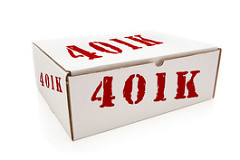
David Lerner Associates: Do You Have a Zombie 401(k)?
These are old 401(k) accounts that are left behind at a former employer when individuals change jobs. Leaving funds in an old 401(k) is sometimes the easiest thing to do, since no paperwork is required and no decisions have to be made about how to re-invest the money. But it’s not always the best option.
“Out of Sight…”
The old saying, “out of sight, out of mind,” often comes into play here: Employees sometimes fail to monitor these old 401(k) accounts as closely as they did when they worked for the former employer. Employees also may sacrifice flexibility and control when they leave retirement funds behind with a former employer.
In fact, new research conducted by the Employee Benefit Research Institute (EBRI) indicates that having more than one retirement account spread out among multiple retirement plans may influence how individuals allocate assets within these accounts. According to the study, individuals who have more than one kind of retirement account generally keep a higher percentage of their assets in stocks than those who have just one kind of account.
In particular, employees who own an Individual Retirement Account are more likely to have all of these assets invested in stocks if they also own a 401(k). EBRI suggests that this may be due to employees rolling old 401(k) accounts over into rollover IRAs and then not updating the asset allocation in the IRA.
Utilizing a rollover IRA is sometimes a smart strategy for avoiding creating zombie 401(k)s when you leave a job — especially if you are not starting a new job right away, or if your new employer doesn’t offer a retirement plan. If you have changed jobs multiple times throughout your career and have accumulated several zombie 401(k)s, you can consolidate all of them into a single rollover IRA.
How to Perform a Rollover
There are no tax consequences associated with rolling over assets in a 401(k) into an IRA if the rollover is done correctly. The first step is to open a new IRA if you don’t have one already. Next, inform the custodian of your former employer’s 401(k) plan that you wish to rollover your account balance into a rollover IRA. The custodian will either transfer the money directly to your IRA (this is known as a direct rollover) or issue a check to you in the amount of your account balance.
If you receive a check, be sure to request that the check be made payable to the custodian of your IRA for benefit of (or FBO) your name. If the check is made out directly to you, you are considered to be in “constructive receipt” of the funds, and a 20 percent withholding penalty will automatically be deducted from the account balance to cover future income taxes.
For example, let’s assume you want to rollover $100,000 from an old 401(k) account to a rollover IRA. If you receive a check made out to you, it will only be for $80,000. But worse yet, you will have to come up with the additional $20,000 to deposit into the IRA within 60 days. Otherwise, you may be subject to taxation at current ordinary income tax rates on the full value of the account, plus a 10 percent tax penalty if you’re under age 59½.
Material contained in this article is provided for information purposes only and is not intended to be used in connection with the evaluation of any investments offered by David Lerner Associates, Inc. This material does not constitute an offer or recommendation to buy or sell securities and should not be considered in connection with the purchase or sale of securities. Member FINRA & SIPC

